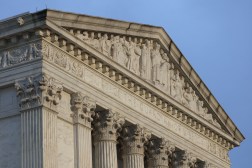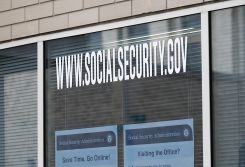Editor’s note: Story has been revised to reflect the toolkit was the product of several agencies’ contributions.
There has been some legislation in promoting equality for individuals with disabilities. More than 20 years ago, the Americans with Disabilities Act was passed, and three years ago, President Barack Obama signed an executive order to make the government a model of hiring those with disabilities.
Although accessibility to social media and technology for people with disabilities has recently received more attention among federal agencies, it remains a neglected area of need. Many think of “disability” as simply referring to physical disabilities, not mental disabilities, hampering efforts to secure services for the large population.
Awareness of this shortcoming was raised last November at a SocialGov Summit hosted by the General Services Administration, which focused on accessibility for people with disabilities. Mario Damiani at the Office of Disability and Employment Policy at the Labor Department moderated a panel on accessibility and has since become the face of this issue for the government.
In December 2012, the Labor Department hosted a webinar series with DigitalGov University, the federal government’s online training program, and had a discussion on accessibility to technology and social media. Following that, ODEP released its first toolkit with tips on making social media, especially Twitter, Facebook and YouTube, more accessible for people with disabilities. The toolkit was compiled from the contributions of around 10 agencies, then compiled by Scott Horvath, Web and social media chief for U.S. Geological Survey.
Damiani, a policy adviser at ODEP, spoke at this week’s SocialGov Summit on virality about how agencies can make viral content more accessible to people with disabilities.
“In the past nine months, the conversation has really taken off,” he said. “It’s very satisfying to be in front of fresh faces and see them really light up when they realize, ‘Wow, I haven’t thought of that before.’ Our goal is at least get people thinking about it.”
The accessibility discussion has focused on thinking about what people can do to change their messaging to be more inclusive of people with various disabilities. For instance, agencies can add captioning to all their videos on YouYube, or even consider how a tweet might sound to a visually impaired individual reading off a tool called a screen reader, which translates computer screen text to speech or braille. By not including obscure acronyms and only using hashtags at the end, tweets are much easier to interpret when vocalized.
GSA, Transportation Department, Interior Department and National Council on Disability have all been working with the Labor Department to make their social media more accessible to those with disabilities, Damiani said.
Version two of ODEP’s toolkit is expected within the next month. It will feature feedback from the first toolkit and help all agencies brief their employees on adopting these new policies. Damiani is optimistic the conversation is headed in the right direction
“It’s the fact that a minority can inadvertently be excluded from social media,” he said. “We need to work harder to change that culture and limit those barriers.”






